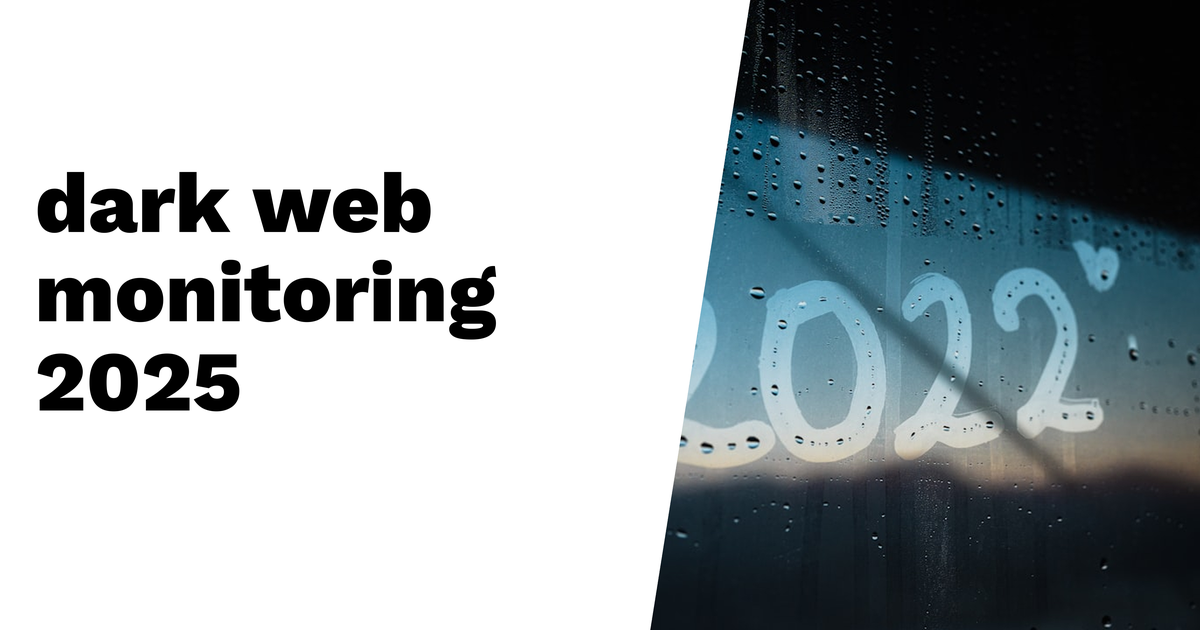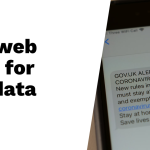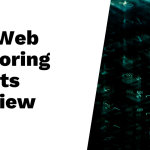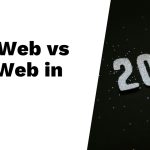Dark web monitoring is crucial for organizations aiming to safeguard sensitive data in 2025. This process involves scanning hidden internet spaces to find stolen or leaked information, such as compromised passwords and personal identifiable information. Key trends include the rise of AI-driven analytics, which significantly improves threat detection speed and accuracy. Organizations also face increasing identity theft incidents, making early breach detection vital for minimizing potential damages. While free dark web scanners may offer limited coverage, investing in comprehensive solutions allows businesses to respond quickly to threats and comply with regulations like GDPR, essential for maintaining customer trust and protecting their reputation in a rapidly evolving cyber landscape.
Table of Contents
- Definition and Purpose of Dark Web Monitoring
- Key Drivers of Dark Web Monitoring Trends in 2025
- Increasing Incidents of Identity Theft
- Impact of Artificial Intelligence
- Proactive Threat Detection
- Limitations of Free Dark Web Scanners
- Emphasis on Privacy and Compliance
- Importance of Early Breach Detection
- Best Practices for Maintaining Organizational Reputation
- Future Challenges in Dark Web Monitoring
- ROI and Justification for Dark Web Monitoring
- Who Needs Dark Web Monitoring?
- Actionable Recommendations
- Frequently Asked Questions
1. Definition and Purpose of Dark Web Monitoring

dark web monitoring involves the ongoing process of scanning hidden parts of the internet to find compromised data that could harm individuals and organizations. This includes searching for stolen passwords, personal identifiable information (PII), and sensitive corporate data that may be sold by cybercriminals. The primary goal is to identify leaked information before it can be exploited, allowing organizations to take proactive measures against potential fraud and data breaches. By monitoring the dark web, companies can gain critical insights that enhance their understanding of the threat landscape and evolving cyber risks. Typically, this process employs a combination of automated tools and human analysis to ensure comprehensive coverage. Effective dark web monitoring is essential not only for immediate threat detection but also for strengthening an organization’s overall security posture.
2. Key Drivers of Dark Web Monitoring Trends in 2025
The rise of cybercrime is a primary factor driving the need for dark web monitoring in 2025. As organizations face an increasing number of attacks, they are prioritizing tools that can help them detect threats early. The widespread adoption of cloud services has also contributed to this urgency, as sensitive data stored in the cloud becomes more vulnerable to breaches. Additionally, the shift to remote work has expanded the attack surface, making it easier for cybercriminals to exploit weaknesses in security.
Artificial intelligence and machine learning technologies are playing a crucial role in transforming monitoring tools. These advancements enable faster and more accurate threat detection, allowing organizations to respond quickly to potential breaches. Furthermore, regulatory demands for data protection are pushing companies to invest in comprehensive monitoring solutions to ensure compliance and protect against penalties.
Growing public awareness around data breaches is another significant driver. Consumers are increasingly concerned about their privacy, compelling organizations to take proactive measures to safeguard sensitive information. Collaborations between cybersecurity firms and law enforcement are on the rise, enhancing the effectiveness of monitoring initiatives. Moreover, as cybercriminal networks become more sophisticated, organizations must adopt advanced monitoring solutions that can keep pace.
Emerging technologies also necessitate adaptive monitoring strategies. As the digital landscape evolves, so do consumer expectations for data privacy, pushing organizations to enhance their security measures. In summary, these key drivers highlight a crucial imperative for organizations to implement robust dark web monitoring practices in 2025.
3. Increasing Incidents of Identity Theft

Identity theft is becoming a more common issue, driven largely by data breaches and leaks that expose sensitive personal information. With stolen identities available for purchase on dark web forums, criminals can gain access to multiple accounts using just one compromised password. This not only inflicts significant financial losses on individuals but also poses serious risks for organizations, which can suffer reputational damage if their customers’ identities are stolen. The rise in digital transactions has created even more opportunities for identity theft, making it crucial for both individuals and businesses to stay vigilant. Timely detection of stolen credentials is vital to prevent fraud, especially since public data breaches often trigger spikes in identity theft cases. Cybersecurity education can empower individuals to protect their information, while dark web monitoring serves as a key tool for organizations to mitigate risks associated with identity theft.
4. Impact of Artificial Intelligence
Artificial intelligence (AI) is revolutionizing dark web monitoring by enhancing the capabilities of various tools. By leveraging AI, organizations can process vast amounts of data much faster than human analysts could, allowing for real-time threat detection. Machine learning algorithms can sift through this data to identify patterns that may indicate potential threats, such as unusual transactions or compromised credentials being traded. Furthermore, AI’s predictive analytics can analyze historical data to forecast emerging threats, which helps organizations stay one step ahead of cybercriminals.
Automated alerts generated by AI systems enable quicker responses to potential breaches, minimizing the time between detection and action. Natural language processing (NLP) plays a critical role as well, as it helps to analyze text from dark web sources, which often contain valuable information about ongoing criminal activities. With AI-driven insights, businesses can adapt their cybersecurity strategies more effectively to address evolving threats. Overall, integrating AI into dark web monitoring not only reduces the workload on human analysts but also improves the accuracy of risk assessments, making it an essential component of modern cybersecurity practices.
5. Proactive Threat Detection
Proactive threat detection is crucial for organizations aiming to stay ahead of cyber threats. By continuously scanning the dark web, organizations can identify leaks of sensitive information before they escalate into significant breaches. This early detection allows for swift responses, minimizing potential damage and protecting valuable data. For instance, a company that discovers compromised credentials early can quickly change passwords and alert affected users, effectively reducing the risk of unauthorized access.
The integration of threat intelligence from dark web monitoring informs and shapes security policies, ensuring that organizations are not only reacting to threats but also preparing for them. Regular updates to monitoring tools help maintain effectiveness against evolving threats, as cybercriminals continually adapt their tactics. Collaboration with cybersecurity experts further enhances these efforts, as their specialized knowledge can identify threats that may otherwise go unnoticed.
Advanced analytics play a vital role in improving accuracy in threat identification, allowing organizations to filter out noise and focus on genuine risks. Additionally, deploying incident response teams can significantly reduce reaction times when threats are detected, ensuring quick containment and remediation. Investing in proactive monitoring not only safeguards sensitive information but also offers long-term cost savings by preventing costly data breaches.
6. Limitations of Free Dark Web Scanners

Free dark web scanners often fall short in several critical areas. These tools usually provide limited coverage of dark web sites, which means they can miss vital data exposures that could significantly impact a business. Without access to advanced features available in paid versions, users might find themselves lacking essential functionalities for effective monitoring.
Moreover, free tools typically do not offer regular updates or adequate support, leaving users vulnerable to evolving threats. They often rely on outdated databases and sources, which can further compromise their effectiveness. Real-time monitoring capabilities are generally absent, making it difficult for organizations to respond promptly to potential breaches.
Users of free scanners may also find that they do not receive comprehensive threat analysis or actionable insights. This lack of depth can hinder their ability to understand the full scope of their vulnerabilities. Privacy risks also come into play, as free services might misuse data or expose users to additional threats. Lastly, the absence of customization options can stifle effective monitoring, leading organizations to mistakenly overestimate their security based on incomplete assessments.
- Free tools often offer limited coverage of dark web sites.
- They may miss critical data exposures that could harm businesses.
- Free scanners typically lack advanced features found in paid versions.
- Limited support and updates can leave users vulnerable to new threats.
- Free tools may not provide real-time monitoring capabilities.
- They often rely on outdated databases and sources.
- Users may not receive comprehensive threat analysis or insights.
- Free services can expose users to privacy risks and data misuse.
- The lack of customization can hinder effective monitoring.
- Organizations risk overestimating their security with free tools alone.
7. Emphasis on Privacy and Compliance

In the evolving landscape of dark web monitoring, compliance with regulations like GDPR is non-negotiable. Organizations must ensure their monitoring practices align with legal standards to protect sensitive data and avoid hefty fines. Understanding privacy laws is fundamental, as it guides how businesses approach monitoring activities. Non-compliance can lead to severe legal repercussions, damaging not only finances but also brand reputation. Building customer trust hinges on transparent data handling practices, making it essential for companies to conduct data privacy audits alongside their monitoring efforts. Collaborating with legal experts can help ensure adherence to regulations, while regular training on privacy laws for employees is vital to maintain compliance. Implementing privacy-centric monitoring solutions can enhance customer confidence, as it demonstrates a commitment to safeguarding their information. Additionally, documenting monitoring processes not only aids compliance but also serves as a reference point in case of audits or inquiries.
8. Importance of Early Breach Detection
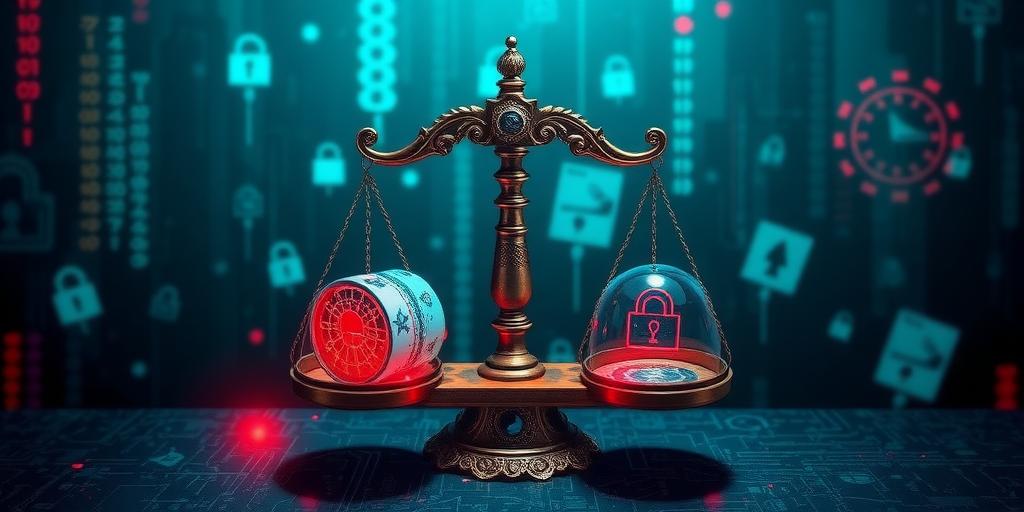
Early detection of data breaches is crucial for organizations aiming to minimize potential damage. When a breach is identified quickly, it allows for swift containment of threats, reducing the risk of further compromise. Organizations can notify affected individuals promptly, potentially preventing significant harm. Moreover, having quick response strategies in place can substantially lower financial losses that may arise from extended exposure.
An early alert system also provides valuable time to remediate vulnerabilities, ensuring that security measures are strengthened before attackers can exploit them further. By actively monitoring the dark web, businesses can identify patterns that might indicate impending breaches, allowing them to implement immediate corrective actions. Regular threat assessments bolster these early detection strategies, providing a clearer picture of the evolving cyber landscape.
Data gathered from monitoring efforts can refine incident response plans, making them more effective when a breach does occur. Furthermore, timely detection fosters a culture of cybersecurity awareness within the organization, encouraging proactive measures among employees. This not only helps in protecting sensitive data but also builds a resilient defense against future threats.
9. Best Practices for Maintaining Organizational Reputation
Timely responses to detected threats are crucial for organizations aiming to protect their reputation. When a potential security breach is identified through dark web monitoring, quick action can significantly lessen reputational damage. Transparent communication with stakeholders during such incidents is equally important. Keeping customers, employees, and partners informed helps maintain trust and shows a commitment to safeguarding their data.
Investing in robust cybersecurity measures not only defends against threats but also builds long-term trust with clients. Regularly updating security protocols is essential in preventing breaches before they happen. Moreover, ongoing employee training enhances awareness and reinforces best practices, ensuring that the entire organization is vigilant against potential threats.
Monitoring customer feedback is another proactive approach. By addressing concerns quickly, organizations can enhance their reputation and demonstrate that they value customer input. Engaging with customers about data protection fosters loyalty and reassures them that their information is safe. A responsive incident management plan is vital; it ensures that organizations can act swiftly and effectively when an issue arises.
Building partnerships with cybersecurity firms can also boost credibility. These collaborations provide access to advanced resources and expertise in threat management. Publicly sharing security initiatives not only informs stakeholders but can also improve public perception, showcasing a proactive stance on data protection.
10. Future Challenges in Dark Web Monitoring
As we move toward 2025, organizations will encounter significant challenges in dark web monitoring. Cyber threats are continually evolving, which means that monitoring strategies must adapt quickly to counter new and sophisticated attacks. For instance, the emergence of new technologies often brings along vulnerabilities that need constant oversight. Cybercriminal networks are becoming increasingly complex, making it difficult to track their activities effectively. Additionally, maintaining a skilled workforce is essential, yet many organizations face budget constraints that limit their ability to invest in advanced monitoring tools. Regulatory changes could also necessitate frequent updates to monitoring practices, adding another layer of complexity.
Public perception plays a crucial role, too; if organizations do not communicate effectively about their monitoring practices, it can erode trust among customers and stakeholders. The integration of multiple security solutions can create cumbersome processes, making it harder to respond swiftly to threats. Moreover, organizations often struggle to prioritize dark web monitoring amid the day-to-day pressures of operations, which can lead to lapses in vigilance. Staying informed about dark web trends is vital, as knowledge gaps can hinder effective monitoring strategies and leave organizations vulnerable.
11. ROI and Justification for Dark Web Monitoring
Investing in dark web monitoring can yield significant returns for organizations. By enabling early detection of stolen data, these services can reduce breach costs, which average around $4.45 million per incident. This early detection can save organizations millions by allowing them to respond swiftly to potential threats, limiting damage and recovery costs. Furthermore, monitoring improves customer trust and retention, as organizations can proactively address security concerns and communicate transparently about their data protection efforts.
Operational efficiency also improves with dark web monitoring tools, which streamline threat identification and reduce the time spent on manual checks. Additionally, companies that can demonstrate active monitoring may benefit from lower insurance premiums, as insurers often view this as a proactive risk mitigation strategy. Compliance with regulatory standards is another crucial factor, as effective monitoring helps avoid hefty fines associated with data breaches and non-compliance.
The threat intelligence gathered from these monitoring efforts can inform broader cybersecurity strategies, enhancing overall protection for the organization. Justifying the costs of monitoring can be done through a comparative analysis of potential financial losses from breaches versus the expenses of monitoring solutions, providing clear metrics to stakeholders. With access to real-time alerts, organizations can respond promptly to threats, further validating their investment in these solutions. Long-term savings can also be realized through continuous monitoring, which can prevent expensive data recovery efforts and mitigate reputational damage following a breach.
| Benefits | Details |
|---|---|
| Reduction in breach costs | Enables early detection of stolen data, potentially saving millions for organizations. |
| Improved customer trust | Retained through proactive threat management and transparent communication regarding data security. |
| Enhanced operational efficiency | Monitoring tools streamline threat identification, reducing time spent on manual checks. |
| Lower insurance premiums | Active dark web monitoring can be viewed as a risk mitigation strategy by insurers. |
| Increased compliance | Helps avoid hefty fines associated with data breaches and non-compliance. |
| Valuable threat intelligence | Informs broader cybersecurity strategies, leading to better overall protection. |
| Justification of monitoring costs | Comparative analysis of potential financial losses from breaches versus monitoring expenses. |
| Quantifiable metrics | From monitoring services help present the value of these solutions to stakeholders. |
| Access to real-time alerts | Allows organizations to respond quickly, limiting damage and justifying the investment. |
| Long-term savings | Continuous monitoring can prevent costly data recovery efforts and reputational damage. |
12. Who Needs Dark Web Monitoring?
Organizations that handle sensitive customer information must prioritize dark web monitoring. This includes industries like retail, finance, and healthcare, where customer trust and data security are paramount. Small and medium-sized businesses (SMBs) are increasingly becoming targets for cybercriminals, making them particularly vulnerable without proper monitoring. Educational institutions are another key group, as they store valuable data on students and staff, necessitating a proactive approach to protect this information. Government agencies face unique threats, making dark web monitoring essential for safeguarding national security and public information. Non-profit organizations also require protection, as they handle donor information and may be specifically targeted for their data. In the technology sector, companies developing software or applications must monitor for potential code leaks and intellectual property theft. Financial organizations like banks and credit unions benefit from monitoring to detect account takeover threats and data breaches. Managed service providers (MSPs) need to ensure they are protecting their clients’ data, maintaining trust in their services. E-commerce platforms, meanwhile, must safeguard customer payment information to prevent fraud. Ultimately, any business or organization that values its reputation and customer trust should seriously consider dark web monitoring as a necessary precaution.
13. Actionable Recommendations
Conduct a thorough risk assessment to pinpoint what sensitive data your organization possesses and the potential threats to that data. It’s essential to choose a reputable dark web monitoring provider, one that offers extensive coverage and advanced analytics to stay ahead of threats. Employee training is equally crucial; equip your team with the skills to recognize phishing attempts and manage passwords securely. Regularly reviewing and updating your incident response plans will help ensure they remain effective against current threats and insights from monitoring.
Integrating dark web monitoring with your existing cybersecurity frameworks can significantly bolster your overall security posture. Use alerts from monitoring services to regularly test and validate the effectiveness of your incident response plan. Establishing a clear communication plan is also vital; it should outline how to inform stakeholders, customers, and employees in the event of a detected breach.
Consider investing in additional security measures such as multi-factor authentication and encryption to complement your monitoring services. Schedule periodic reviews of monitoring results, allowing you to adapt your strategies based on emerging threats and vulnerabilities. Finally, collaborating with cybersecurity experts can provide valuable insights into interpreting monitoring data and developing proactive risk mitigation strategies.
Frequently Asked Questions
What is dark web monitoring and why is it important?
Dark web monitoring is the process of searching the dark web for stolen or compromised personal information. It’s important because it helps individuals and organizations find out if their data is being sold or misused, allowing them to take action to protect themselves.
How does dark web monitoring work?
Dark web monitoring typically works by using automated tools or services that scan various dark web forums and marketplaces. These tools look for sensitive information, such as emails, passwords, or credit card numbers, and alert users if their information appears.
Who might need dark web monitoring services?
Anyone can benefit from dark web monitoring, but it is especially important for businesses, financial institutions, and individuals who may have sensitive information at risk, such as social security numbers or bank details.
Is dark web monitoring only for big companies?
No, dark web monitoring is not just for big companies. Individuals, families, and small businesses can also benefit from this service, as they can be vulnerable to identity theft and data breaches.
What should I do if my information is found on the dark web?
If your information is found on the dark web, the first step is to change your passwords and enable two-factor authentication on your accounts. You should also monitor your financial accounts for any suspicious activity and consider placing a fraud alert with credit bureaus.
TL;DR Dark web monitoring continuously scans hidden online spaces to identify compromised data, protecting organizations from increasing threats like identity theft. Key trends for 2025 include AI-driven analytics, proactive takedown services, and regulatory compliance. Early breach detection and robust monitoring practices are crucial for safeguarding reputations and mitigating risks. While free tools exist, they often lack coverage, making comprehensive solutions essential. Businesses of all sizes handling sensitive data should invest in these monitoring services to enhance security and maintain trust.

